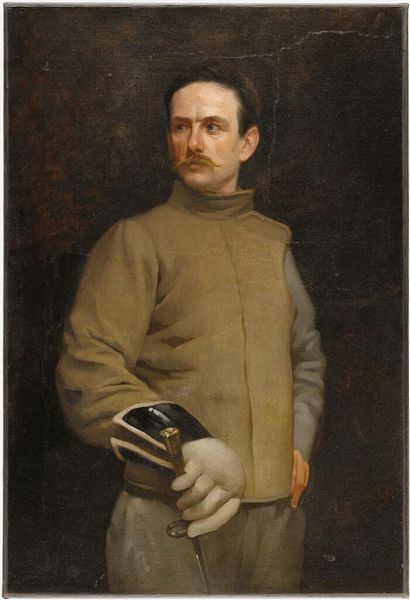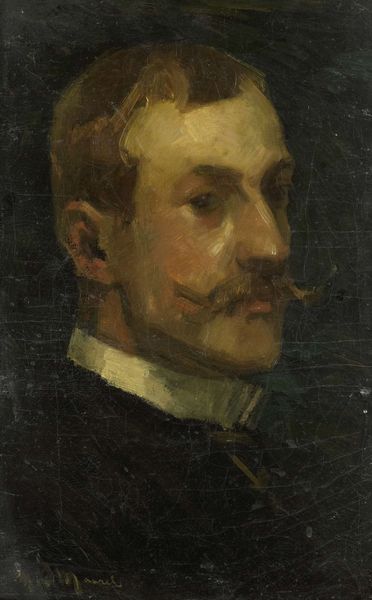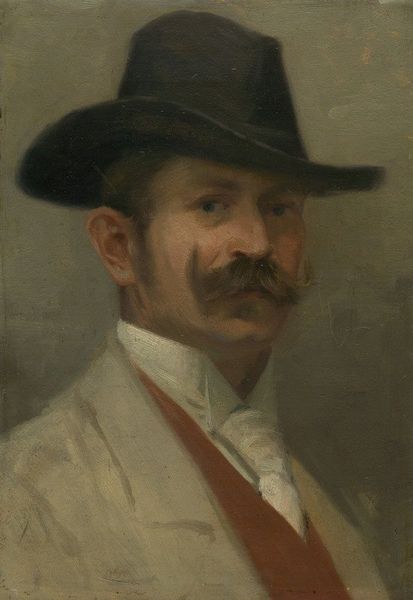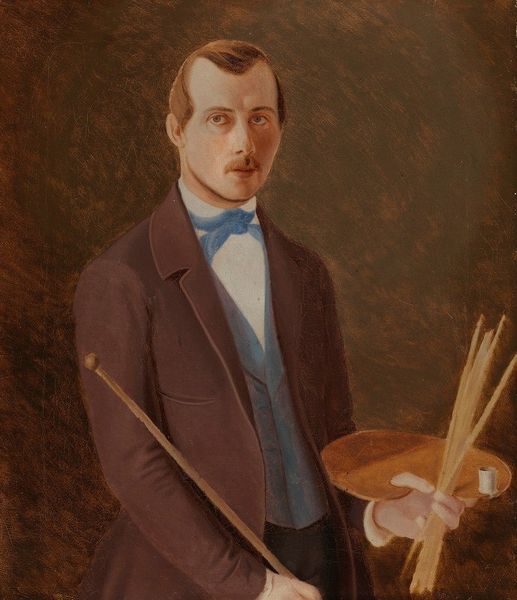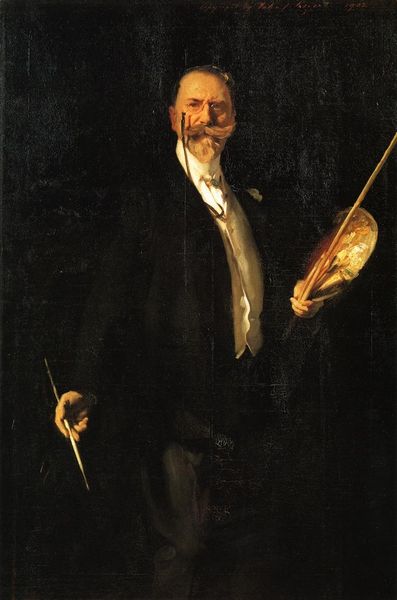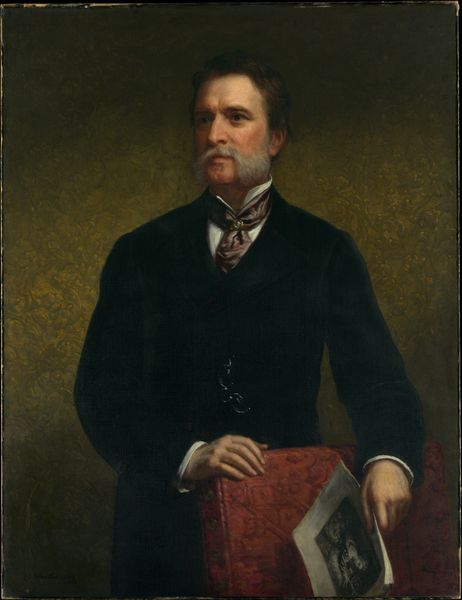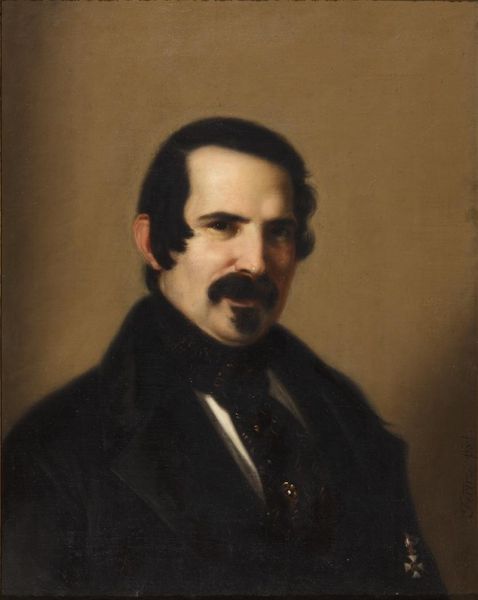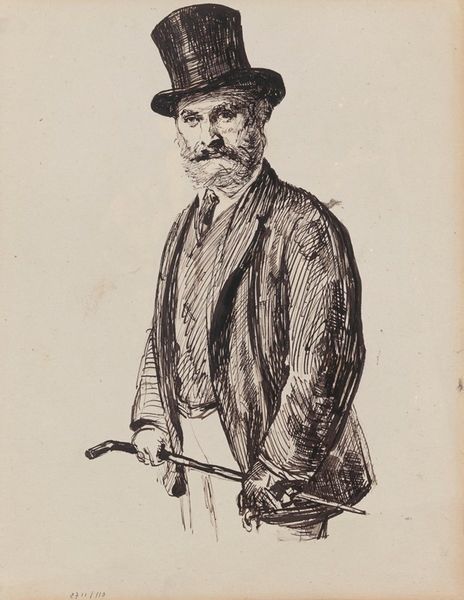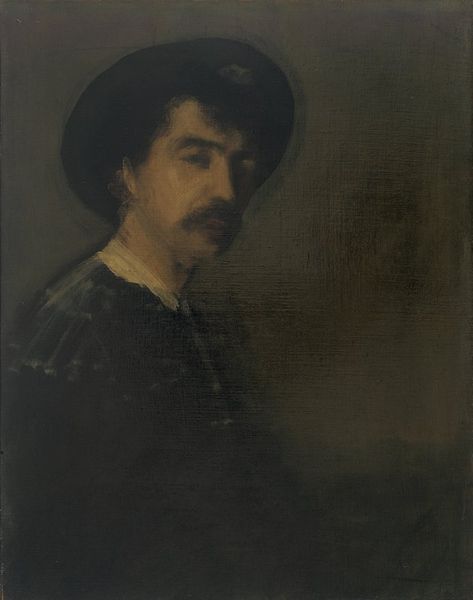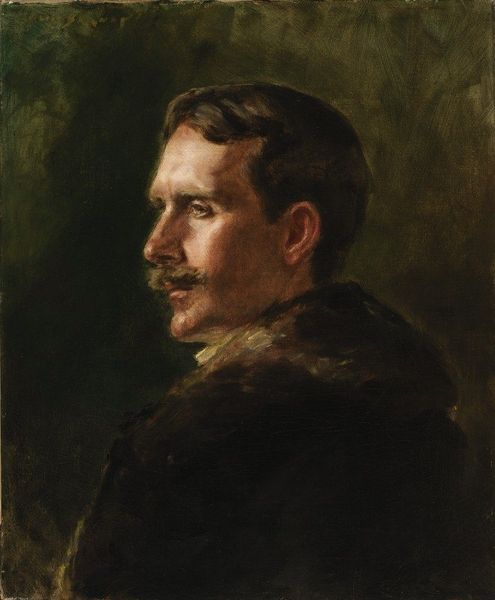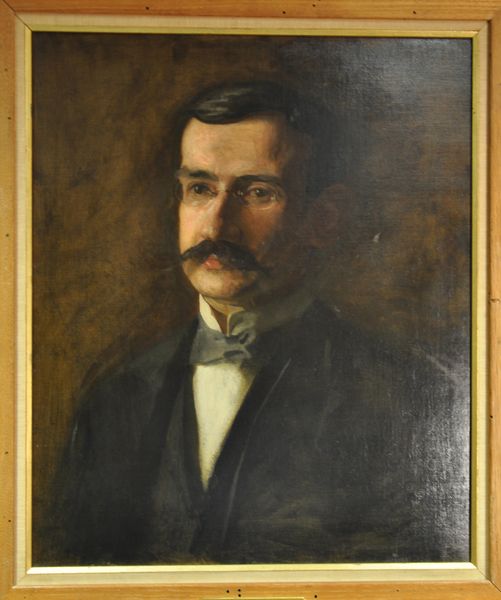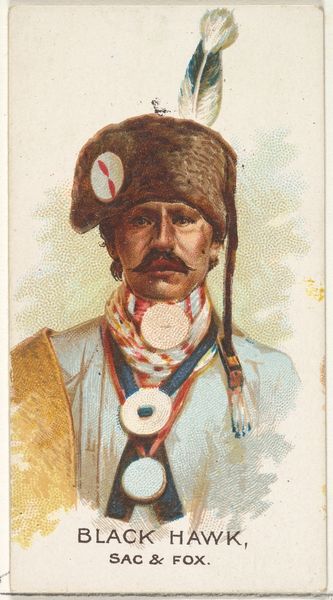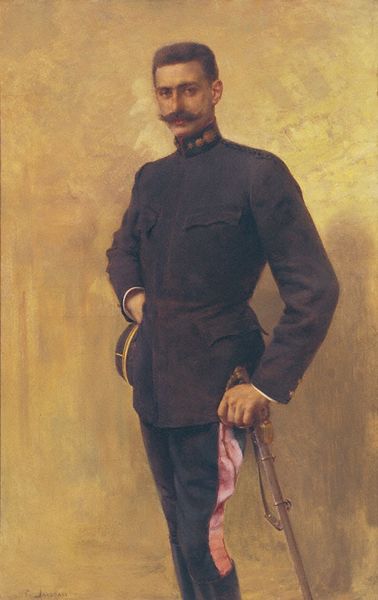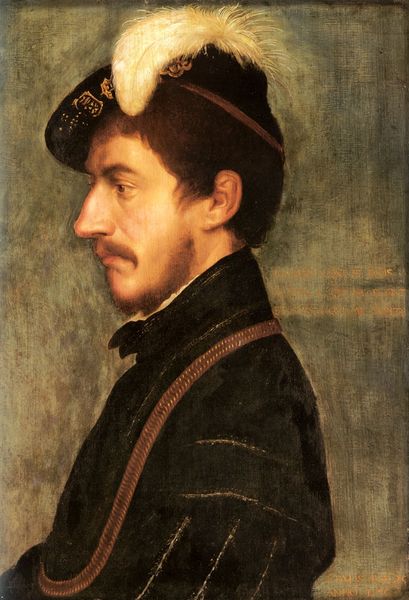
Copyright: Public domain
Editor: This is Frederick McCubbin's Self-portrait from 1886, rendered in oil. I'm struck by the composition; how the dark background really makes his face and palette pop. What stands out to you, looking at it purely from a visual standpoint? Curator: The construction of space within the painting immediately draws my attention. The limited palette, largely muted tones, emphasizes the material presence of the oil paint itself. Note how the impasto—the thickness of the paint—on the palette contrasts with the smoother rendering of his face. This directs us to consider the act of painting itself as the primary subject, even within a self-portrait. Editor: So you’re saying it's a painting about painting, more than a painting about McCubbin the person? Curator: Precisely. Observe also the triangulation formed by his face, the palette, and the hand holding the brush. This creates a visual rhythm, a self-referential loop drawing our eye through the processes and tools of art making. Does that register with you? Editor: Definitely. The way the brushes point back up toward his face is a really interesting detail that I hadn't considered before. How would you say the texture impacts the painting’s overall effect? Curator: Texture functions here as a signifying element. The roughness of the paint applied to the palette not only represents its physical reality, loaded with colour, but also contrasts deliberately with the relatively smoother surface of McCubbin’s face, imbuing it with a sense of considered artistry. Editor: That's a fascinating reading of the piece. I appreciate how you've brought out these layers of meaning just by focusing on the formal elements. Curator: Indeed. It reminds us of the power inherent in examining the work itself and how this can guide and inform our understanding.
Comments
No comments
Be the first to comment and join the conversation on the ultimate creative platform.
